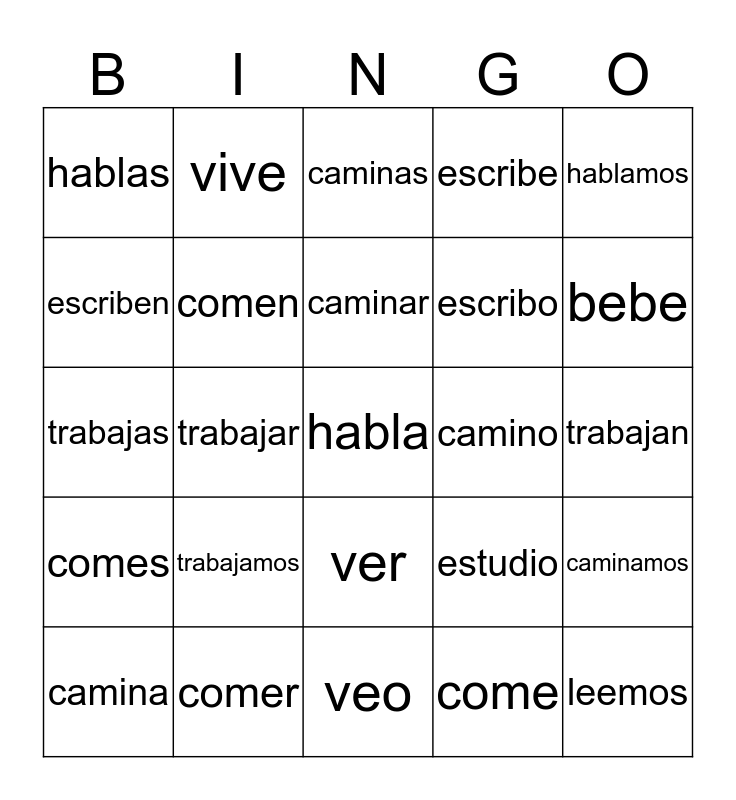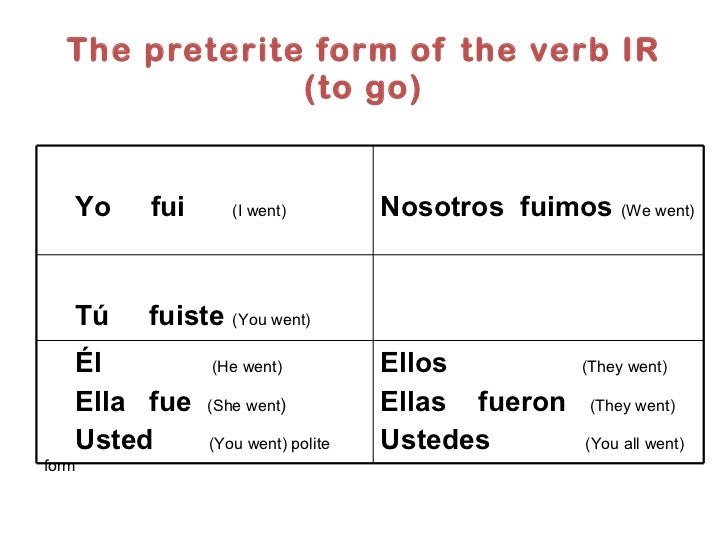

If you’re saying “I am going” in Spanish, as in, going somewhere, you can use ir + a: Of course, it changes for each tense (and the future tense, “I will go” uses ir as the root), but there are always patterns you can pick up on.Īs for “going” in Spanish, it depends on what you’re going to say. So it’s not that bad once you see the pattern! The only difference is “I go” in Spanish – yo voy – ends in -oy. It shifts to a “v” and then follows the same general pattern as -ar verbs: -o, -as-, -a, -amos, -áis, -an. If you already know some of your Spanish conjugation, you may recognize that ir actually conjugates like an -ar verb in Spanish in present tense. So upon first look, you’re probably like “Why is it so strange?!” But take a closer look.

So while ir looks like it should be an -ir verb because that’s all it consists of, it’s actually an irregular verb. In Spanish, you need to know what category the verbs fall into: -ar, -er, or -ir verb endings. Time to Go to Your Next Spanish Lesson!.To be kept informed of new publications, subscribe to the Youtube channel Flemotion : apprendre le français (video 100% in French but still useful for English speakers to learn French) and to the Youtube channel Learn French with Flemotion (videos with explanations in English) and to the Facebook page Flemotion : apprendre le français. We regularly publish new content to learn French.

You can find other French conjugation lessons in French by clicking here. You can also perfect your learning of the French language thanks to our: Once you have successfully mastered this conjugation lesson on the French verbs in IR in the present tense, you can move on to the next conjugation lesson:įrench conjugation lesson 12: the near future tense in French You will learn them by practicing the French language. There are other French irregular verbs in IR with subtleties of conjugation in the present tense. The derivatives of the French verb venir (devenir, revenir, intervenir, se souvenir, etc.) and the French verb tenir and its derivatives (contenir, détenir, maintenir, obtenir, etc.) are conjugated according to the same model. Here is the list of the French verbs in IR of the 3rd group which conjugate according to this model:Īccueillir, assaillir, couvrir, cueillir, découvrir, entrouvrir, offrir, ouvrir, recouvrir, recueillir, redécouvrir, rentrouvrir, rouvrir, saillir, souffrir et tressaillir.Ģ) The French verbs like dorm ir, ment ir or part ir :Ī) In the singular (je, tu, il, elle, on), they are made up of the first 3 letters of the stem: dor for dormir, men for mentir, par for partir + endings s, s and t.ī) In the plural (nous, vous, ils, elles), they consist of the stem: dorm for dormir, ment for mentir, part for partir + endings ons, ez, ent. That is, they consist of the stem (the infinitive without “ir”) plus, depending on the subject, the endings: e, es, e, ons, ez, ent.įor example, with the French verb “ouvr ir” : We have divided them into 3 categories:ġ) The French verbs like cueill ir, offr ir, ouvr ir ou souffr ir, the conjugation of which is the same as that of the first group.


 0 kommentar(er)
0 kommentar(er)
